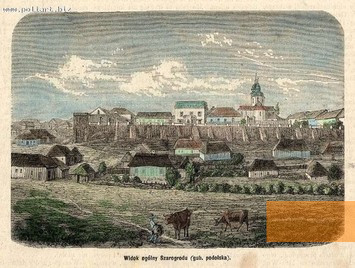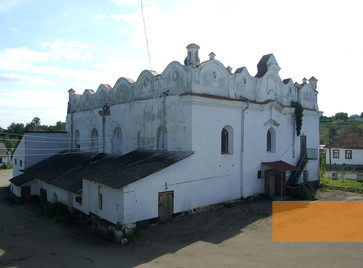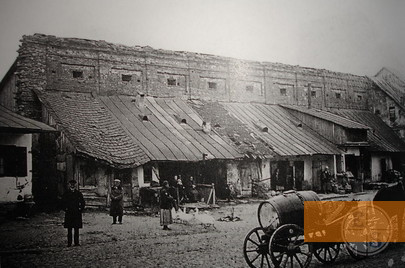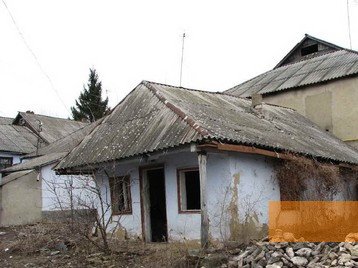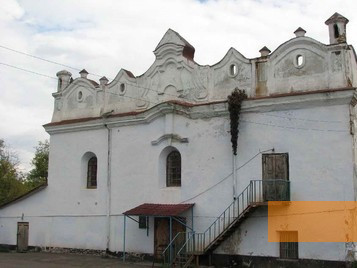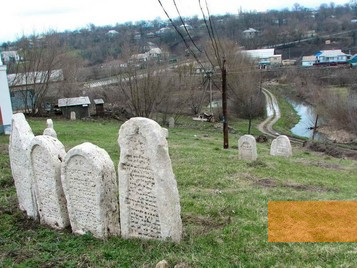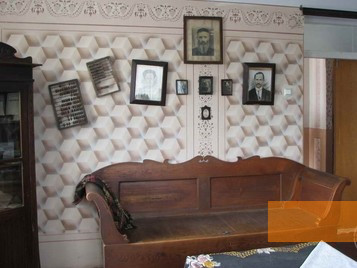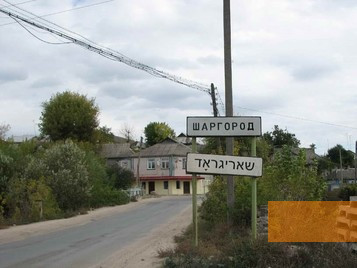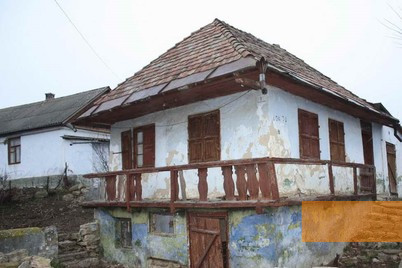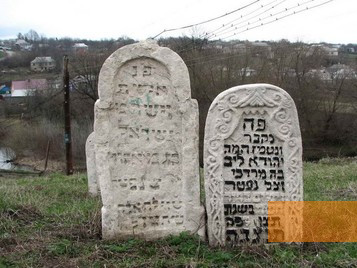In the small town of Sharhorod, an imposing 16th century synagogue of significance in art history and two Jewish cemeteries remember the Jewish past of the town.
In Sharhorod (Russian: Shargorod, Polish: Szarogród), situated in the historical region of Podolia, Jews have lived since the 16th century. After the Jewish community was almost wiped out during the Khmelnitsky Uprising in 1648, it was once again one of the largest in Podolia in the middle of the 18th century. In 1793, during the second division of Poland, the city fell to the Russian Empire. Soviet after World War I, the authorities banned all Jewish institutions in 1930. In 1939 there were about 1,660 Jews living in the city, three quarters of the population. On July 22, 1941 German troops occupied Sharhorod. The soldiers harassed Jews and looted their property. Jews were obliged to pay tribute to the Germans and had to wear an armband with a »Jewish Star«. In autumn 1941 Sharhorod became part of the newly founded Romanian »Transnistria Governorate«. The Romanian occupation authorities had all Jewish inhabitants moved to a ghetto in the city centre. From the beginning of November 1941, thousands of Jews who had been deported from the Romanian territories of Bessarabia and Bukovina flocked to the city. Many of them paid for being allowed to stay in Sharhorod to save themselves from the onward transport to camps. The number of Jews in the ghetto had risen to about 7,000: 1,800 were locals and over 5,000 were »Romanian« Jews. Thus Sharhorod was home to the third largest ghetto in Transnistria after Mohyliv-Podilskyi and Bershad. Compared to other ghettos in Transnistria, the living conditions in Sharhorod were tolerable despite forced labour: there was a bakery, a soup kitchen for the poor and a functioning administration. Towards the end of the year even the great synagogue was reopened. At the beginning of 1942, however, a typhoid epidemic broke out in the ghetto killing almost 1,449 people. The epidemic was contained by mid-1942.
In contrast to other sites in the region, hardly any Jews died a violent death in Sharhorod during the German or Romanian occupation. Only four murders of Jews are known during this period. Up to 7,000 Jews lived in the ghetto and both men and women had to conduct forced labour. During the typhoid epidemic at the end of 1941 / beginning of 1942 approximately 1,449 inhabitants of the ghetto died.
Sharhorod was liberated on March 20, 1944 and after the end of the war belonged again to the Soviet Union. The Jewish community had largely survived the occupation and the war. During the disintegration of the Soviet Union many Jews left the country so that by 1993 only about 700 Jews lived in Sharhorod. During this time the Jewish community was officially re-established. Sharhorod is known for its Renaissance synagogue, consecrated in 1589. It was not only a place of worship but also a fortress. Today the building is again in possession of the Jewish community, but for a long time it was in a poor state of repair. Meanwhile restoration works are progressing. In the synagogue there is a small exhibition about the history of the Sharhorod Jews. Near the synagogue there are also two Jewish cemeteries located on the banks of the Kolbasnaya and Murashka rivers in the south of the city. The newer one was founded at the end of the 18th century, on the older one there are about 500 gravestones dating back to the 16th century. They were damaged during the Second World War, but were partially restored afterwards. Today, the town’s inhabitants and the Jewish community take care of their preservation.
- Name
- Єврейська архітектура в Шаргороді
- Address
-
Vulits Kirova
23500 Scharhorod - Web
- https://ujew.com.ua/shal-noj-shtetl-shargorod


